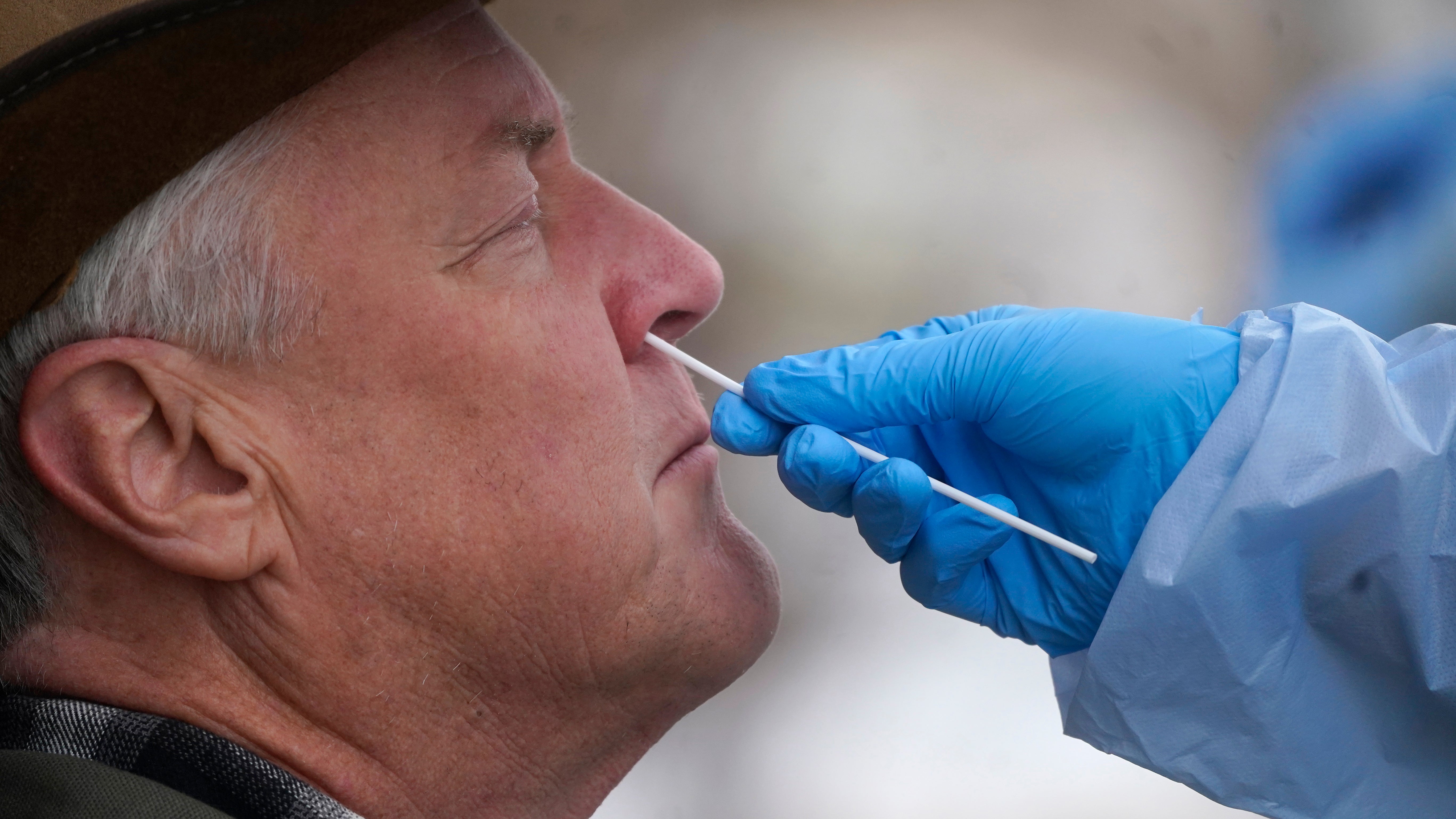CDC posts rationale for shorter isolation, quarantine
U.S. health officials are explaining why they recently shortened their COVID-19 isolation and quarantine recommendations

Your support helps us to tell the story
From reproductive rights to climate change to Big Tech, The Independent is on the ground when the story is developing. Whether it's investigating the financials of Elon Musk's pro-Trump PAC or producing our latest documentary, 'The A Word', which shines a light on the American women fighting for reproductive rights, we know how important it is to parse out the facts from the messaging.
At such a critical moment in US history, we need reporters on the ground. Your donation allows us to keep sending journalists to speak to both sides of the story.
The Independent is trusted by Americans across the entire political spectrum. And unlike many other quality news outlets, we choose not to lock Americans out of our reporting and analysis with paywalls. We believe quality journalism should be available to everyone, paid for by those who can afford it.
Your support makes all the difference.The Centers for Disease Control and Prevention on Tuesday explained the scientific rationale for shortening its COVID-19 isolation and quarantine recommendations, and clarified that the guidance applies to kids as well as adults.
The CDC also maintained that, for people who catch COVID-19, testing is not required to emerge from five days of isolation — despite hints from other federal officials that the agency was reconsidering that.
The agency announced the changes last week, halving the isolation time for Americans who catch the coronavirus and have no symptoms or only brief illnesses. Isolation should only end if a person has been fever-free for at least 24 hours without the use of fever-reducing medications and if other symptoms are resolving, the CDC added.
It similarly shortened the time that close contacts need to quarantine, from 10 days to five.
CDC officials previously said the changes were in keeping with evidence that people with the coronavirus are most infectious in the two days before and three days after symptoms develop.
Some experts have questioned how the new recommendations were crafted and why they were changed amid a spike in cases driven largely by the highly contagious omicron variant. Some also expressed dismay that the guidelines allowed people to leave isolation without getting tested to see if they were still infectious.
On Tuesday, the CDC posted documents designed to address those — and other — questions about the latest recommendations. The new guidance applies to school children as well as adults, the CDC said, responding to questions raised by school leaders around the country.
In laying out the scientific basis for the revisions, the agency said more than 100 studies from 17 countries indicate that most transmission happens early in an infection. The CDC acknowledged the data come from research done when delta and other pre-omicron variants were causing the most infections. But the agency also pointed to limited, early data from the U.S. and South Korea that suggests the time between exposure and the appearance of symptoms may be shorter for omicron than for earlier variants.
The CDC also took up the question of why it didn't call for a negative test before people emerge from isolation.
On Sunday, Dr. Anthony Fauci — the White House’s top medical adviser — said the CDC was considering including the negative test as part of its guidance.
The agency said lab tests can show positive results long after someone stops being contagious, and that a negative at-home test may not necessarily indicate there is no threat. That's why, the agency said, it was recommending that people wears masks everywhere for the five days after isolation ends.
It did offer tips for those who have access to the tests and want to check themselves before leaving isolation.
Dr. Eric Topol, the head of the Scripps Research Translational Institute, accused the agency of furthering confusion. He agreed that it is appropriate to shorten isolation time, but only with testing.
“We do need to come up with a strategy that limits isolation time, but we don’t want it to be one that’s adding to the spread of the virus and unwittingly leading to the virus circulating,” he said.
The CDC also suggests that people exposed to the virus quarantine for five days, unless they have gotten booster shots or recently received their initial vaccine doses. The agency said anyone exposed — regardless of vaccination status — should get tested five days later, if possible.
The agency also admitted that many people weren’t following the previous isolation and quarantine recommendations anyway. Research suggests only 25% to 30% of people were isolating for a full 10 days under the older guidance, the CDC said.
___
Associated Press writer Carla K. Johnson contributed to this report.
___
The Associated Press Health & Science Department receives support from the Howard Hughes Medical Institute’s Department of Science Education. The AP is solely responsible for all content.